For all the criticisms of stodginess, it is a testament to the ongoing cultural significance of the Turner Prize—the U.K.’s most prestigious contemporary-art honor—that it continues to incite passionate analysis from aficionados and naysayers alike. Though historically a controversial event, recent years have seen increased fervor for upending the familiar formula, usually in the name of today’s most popular buzzword: “solidarity.”
For instance, the 2019 finalists—Lawrence Abu Hamdan, Helen Cammock, Oscar Murillo, and Tai Shani—famously both shunned and welcomed the award with their joint acceptance of the prize, made as a “statement in the name of commonality, multiplicity, and solidarity.”
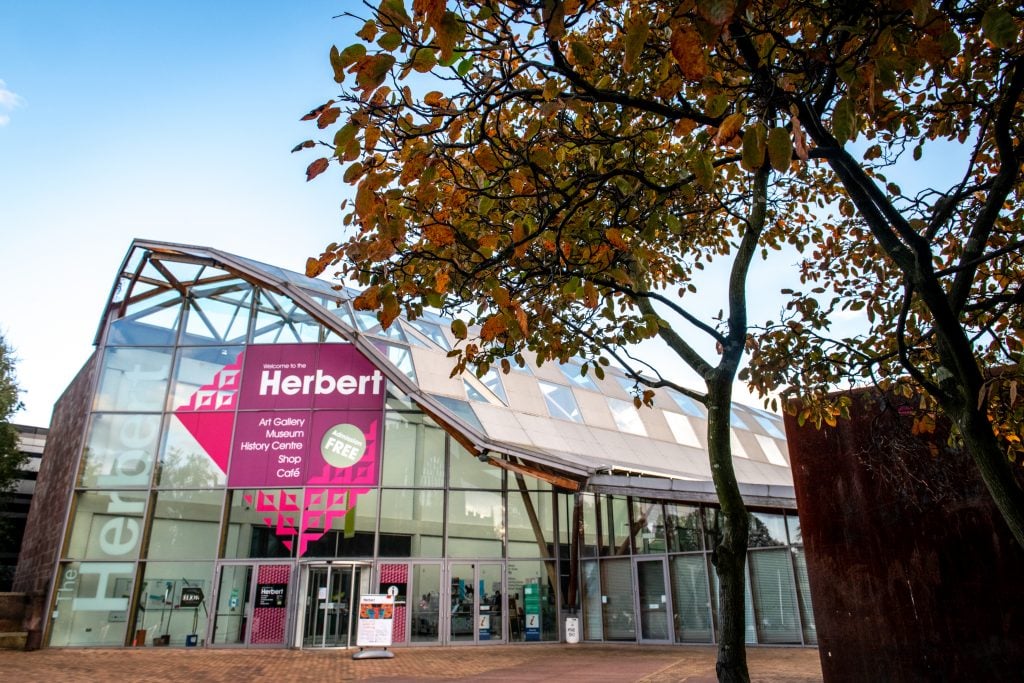
Herbert Art Gallery and Museum, Coventry, U.K., this year’s Turner Prize exhibition venue. © Garry Jones Photography.
In May 2020, Tate Britain doled out ten individual artists’ bursaries in lieu of a single winner and the customary group exhibition. Again, the lofty goal was to “help support a larger selection of artists through this period of profound disruption and uncertainty,” as Tate Britain announced in a press release.
Now, in 2021, this turn toward the utopian continues, with this year’s iteration marking the first time the Turner Prize jury selected a shortlist consisting solely of artist collectives. Tate Britain has said that the nominees—Array Collective, Black Obsidian Sound System (B.O.S.S.), Cooking Sections, Gentle/Radical, and Project Art Works—“reflect the solidarity and community demonstrated in response to the pandemic.”
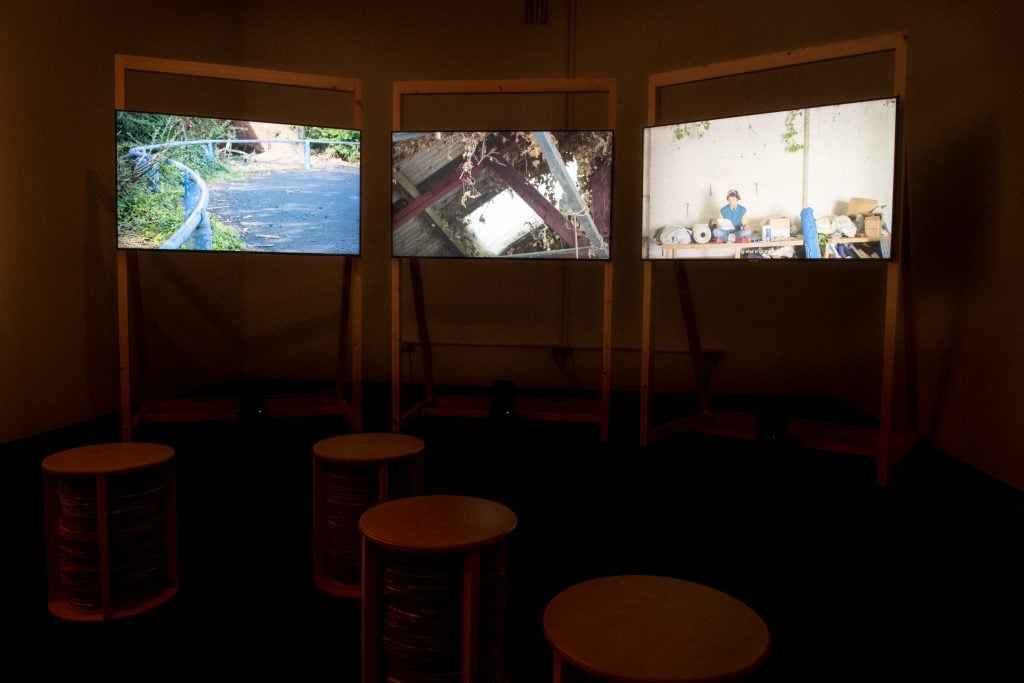
Installation view of work by Gentle/Radical in the Turner Prize 2021 exhibition at the Herbert Art Museum and Gallery, Coventry. Photo: Garry Jones.
Indeed, the fabric of all five collectives’ practices consists of various threads of social activism woven together through film, painting, installation, or sound. But the decision sparked backlash, with a chorus of think pieces (in ArtReview, Frieze, and elsewhere) lamenting the character of the 2021 Turner Prize. Nominee B.O.S.S. actually issued its own statement denouncing the Tate’s allegedly superficial commitment to social issues.
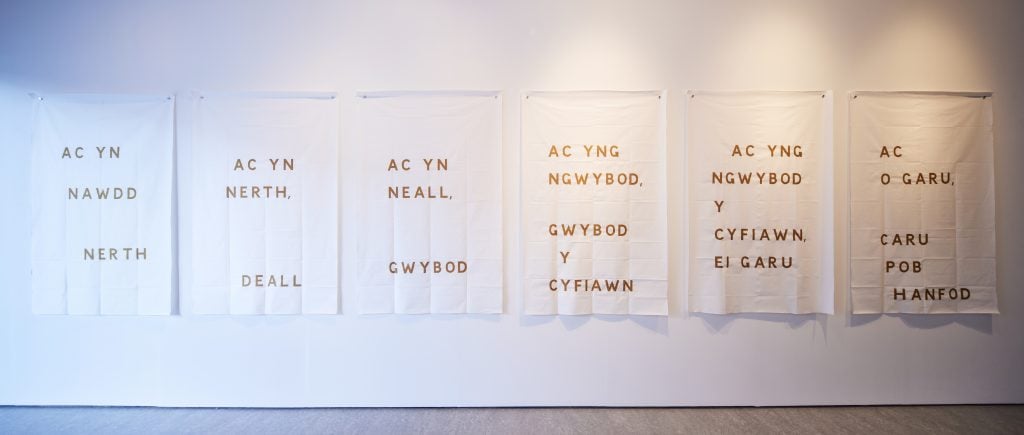
Installation view of work by Gentle/Radical in the Turner Prize 2021 exhibition at the Herbert Art Museum and Gallery, Coventry. Photo: David Levene.
All of this preemptive brouhaha has finally culminated with the official opening of the Turner Prize exhibition at the Herbert Art Gallery and Museum in Coventry, the U.K.’s 2021 City of Culture. The five collectives’ presentations stretch across four individual galleries, with the Welsh entrant, Gentle/Radical, serving as the curtain-raiser in an introductory space removed from its nominated peers. The community activists—not all made up of traditional artists—present a series of flags alongside a projection focused around Gorsedd bardic prayers, in a defiant post-colonial reclamation of Welsh culture.
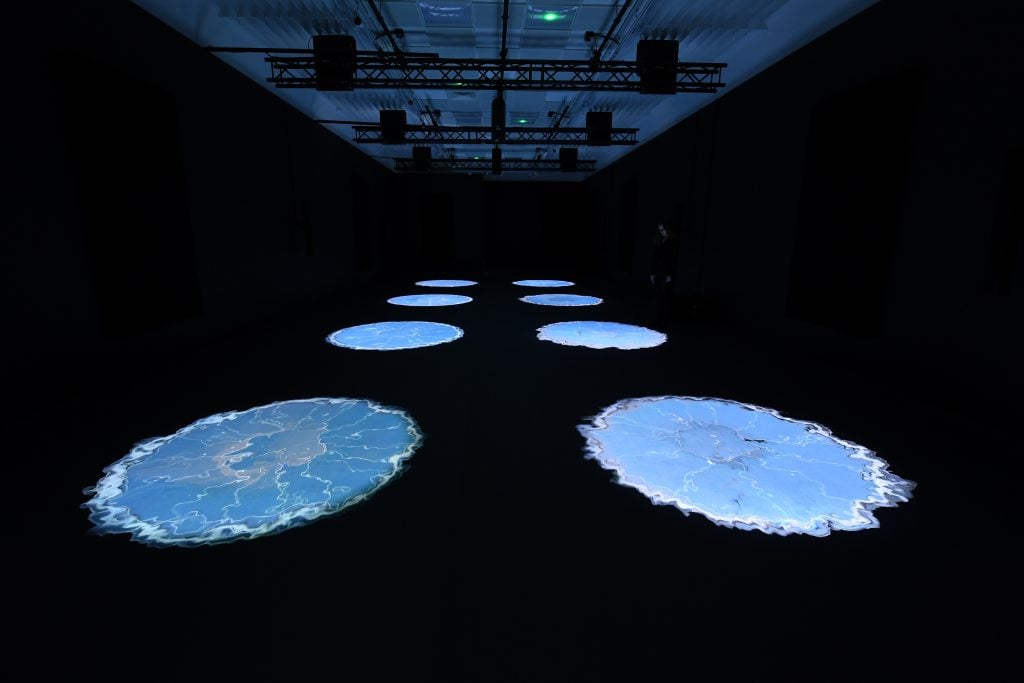
Installation view of work by Cooking Sections in the Turner Prize 2021 exhibition at the Herbert Art Museum and Gallery, Coventry. Photo: Doug Peters/PA Wire.
Elsewhere, the ultra-hot Cooking Sections, who just closed a stellar solo show at Tate Britain, somewhat lazily relies upon a reheat of that recent exhibition, once again examining the effects of salmon farming. Since this duo is concerned with how our food consumption impacts the climate emergency, why not shed light upon a new aspect of that complex and enormous issue, given the opportunity of this highly visible platform?
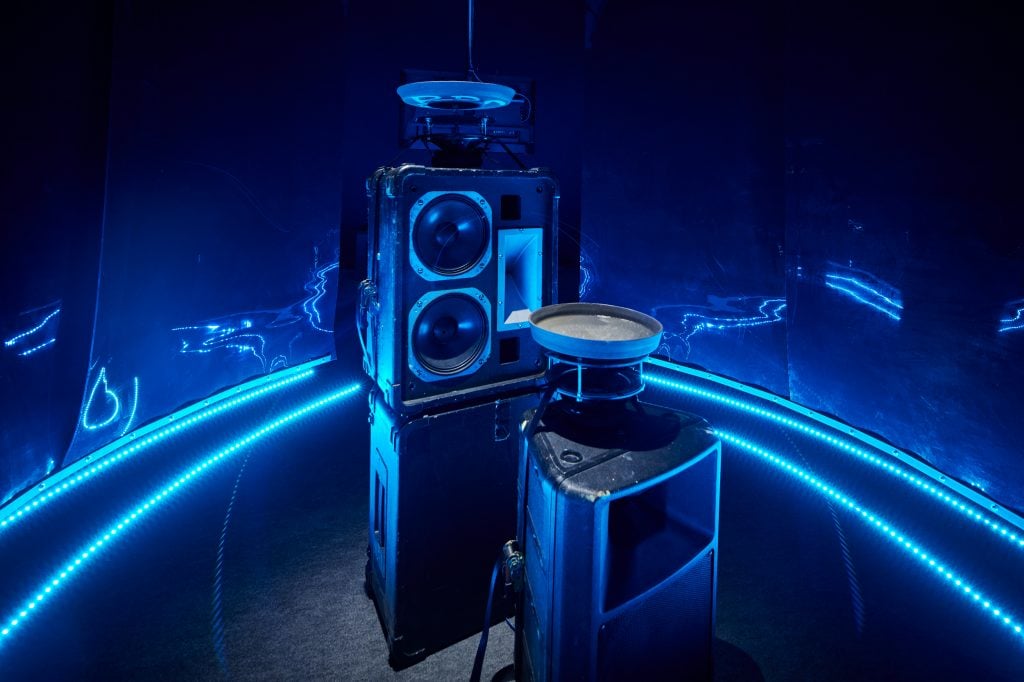
Installation view of work by B.O.S.S. in the Turner Prize 2021 exhibition at the Herbert Art Museum and Gallery, Coventry. Photo: David Levene.
B.O.S.S. offers a dark room sparsely outfitted with a stark set of speakers paired with flowing banners animated by household fans placed on the floor beneath, all capped off with a black obsidian sphere on a plinth. A streamer announces that “Sound is the only system,” which comes across as a half-baked declaration: despite the conviction with which it is declared, the statement’s zeal is rendered moot by the absence of precise meaning. (If the installation underwhelms, it should be noted that B.O.S.S.’s public criticism also addressed the lack of adequate time for the group to prepare for the exhibition.)
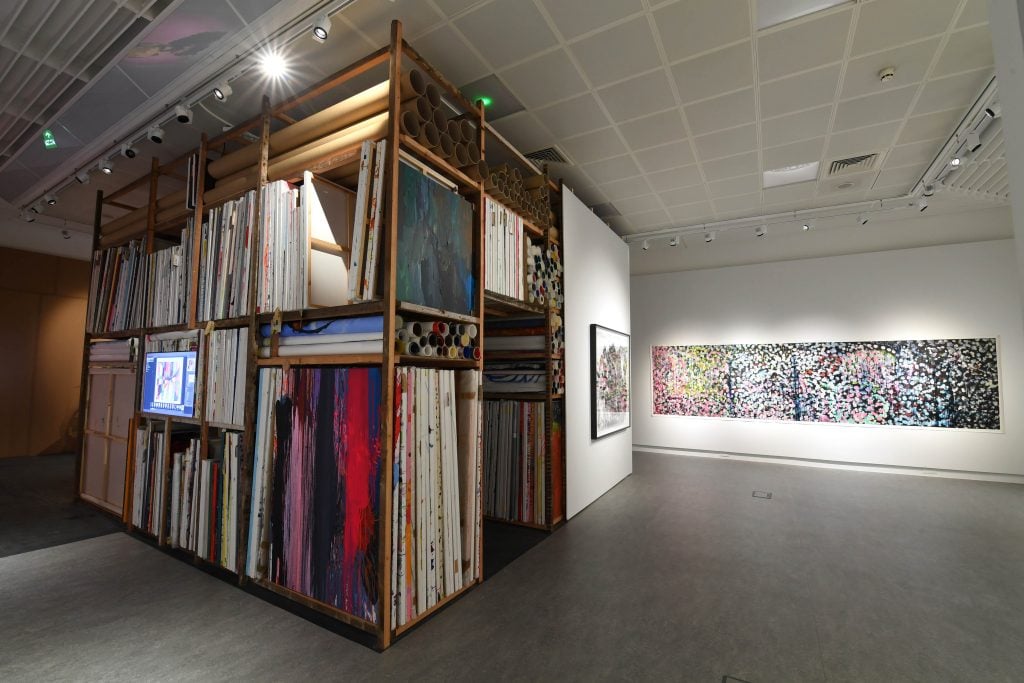
Installation view of work by Project Art Works in the Turner Prize 2021 exhibition at the Herbert Art Museum and Gallery, Coventry. Photo: Doug Peters/PA Wire.
Project Art Works, hailing from Hastings, restages a “typical” artist’s studio. Their intervention initially appears to be an ordinary creative space, with framed works hung on white walls. Yet the gallery’s conventional white-cube feel is interrupted by a smaller enclave, installed smack-dab in the center of the room, that houses an archive of over 4,000 works by neurodivergent artists. Project Art Work’s accomplishment is rooted in this sleight of hand, disarming the audience with the slick banality of the initial setting, which amplifies the revelation that neurodiverse creators are responsible for all of the art on view—thus making it clear that greater visibility and acceptance for such “disabilities” benefits culture at large.
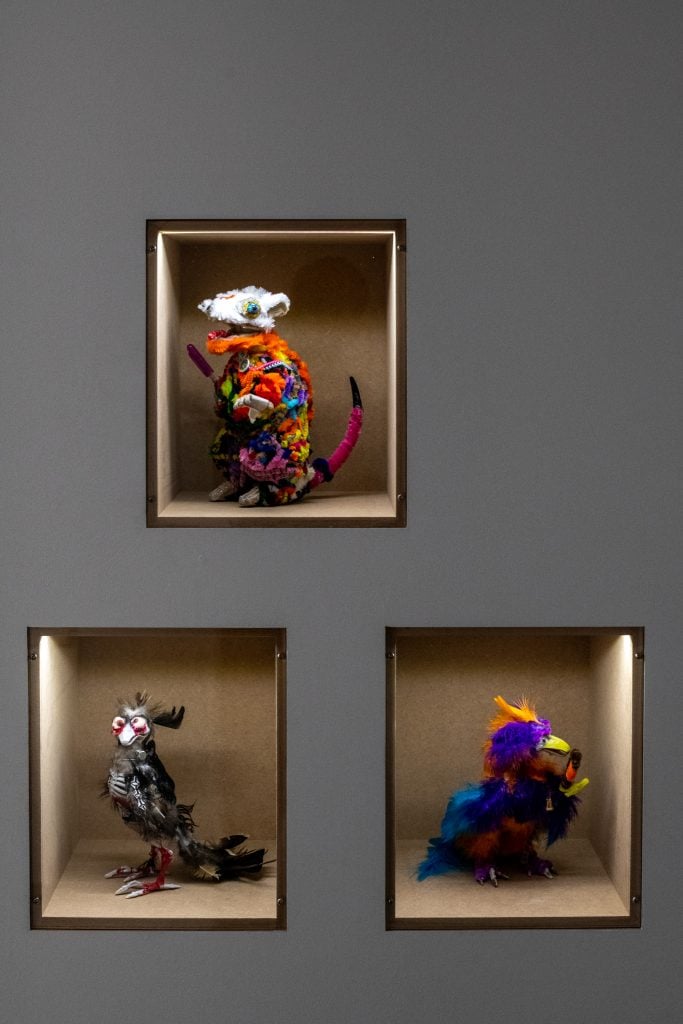
Installation view of Project Art Works in the Turner Prize 2021 exhibition at the Herbert Art Museum and Gallery, Coventry. Photo: Garry Jones.
Last but not least, the Belfast-based Array Collective, which focuses on social issues affecting Northern Ireland—including abortion rights, queer visibility, mental health, and gentrification—has created a makeshift pub which takes up the majority of their allotted gallery space in an installation that stands head and shoulders above their fellow nominees.
The colloquial “pub” dates back to 1859, a slang shortening of “public house.” Though that fact is not explicitly referenced in the exhibition text, the idea of a location built solely as a space for a community to come together looms large here. A three-channel video work is mounted on the far wall, with members of marginalized communities relating mythological stories with knee-slapping barroom humor. I was moved to tears by one portion describing LGBTQ+ persons living in Northern Ireland during the Troubles. Despite the horror of that history, tales of “Catholic fairies” and “Protestant fairies” who managed to actively identify and recover a sense of love, kindness, and community provided the most powerful moment during this year’s remarkable Turner Prize exhibition.
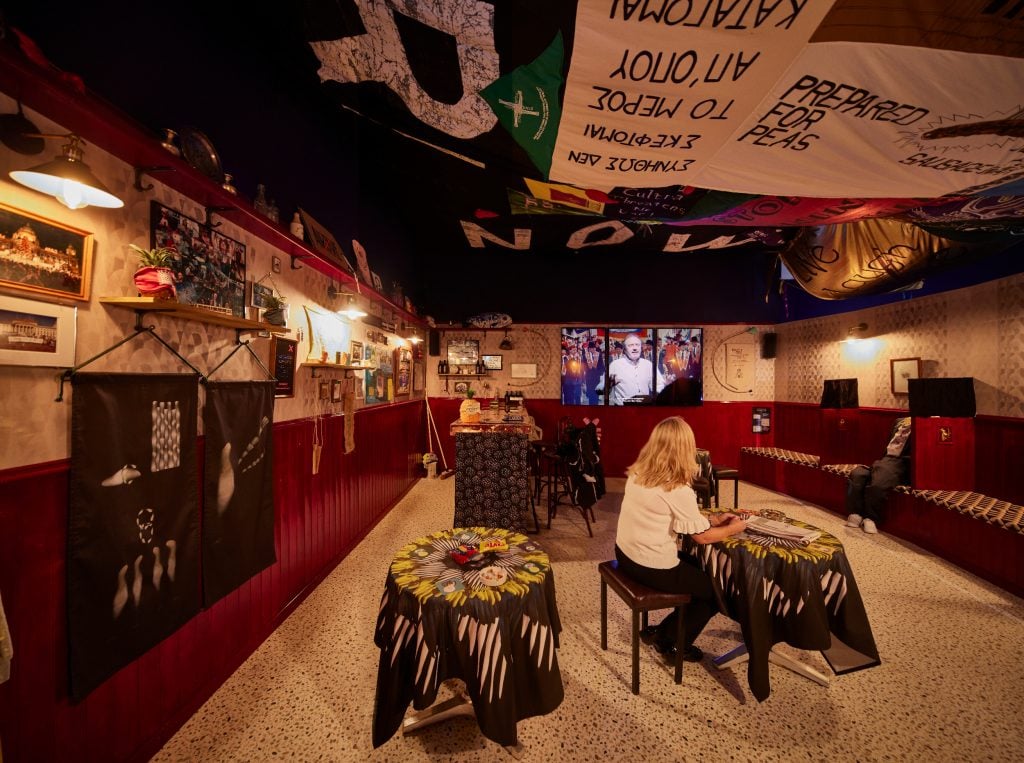
Installation view of work by Array Collective in the Turner Prize 2021 exhibition at the Herbert Art Museum and Gallery, Coventry. Photo: David Levene.
Pitting socially-minded activist collectives against each other could be perceived as a contest of moral superiority, particularly when staged during a moment in which use of the term “solidarity” has become near-meaningless in its ubiquity. But even if the concept of solidarity seems saccharine—and even arguably outdated at this point—the Turner Prize jury correctly identified the pulse of current art-making. By that measure, this is a successful exhibition. It should appeal not only to those interested in contemporary art, but also to those with a stake in discourses propelling critical change in society today.
“Turner Prize 2021” is on view at the Herbert Art Gallery & Museum, Coventry, U.K., September 29, 2021–January 12, 2022.
















